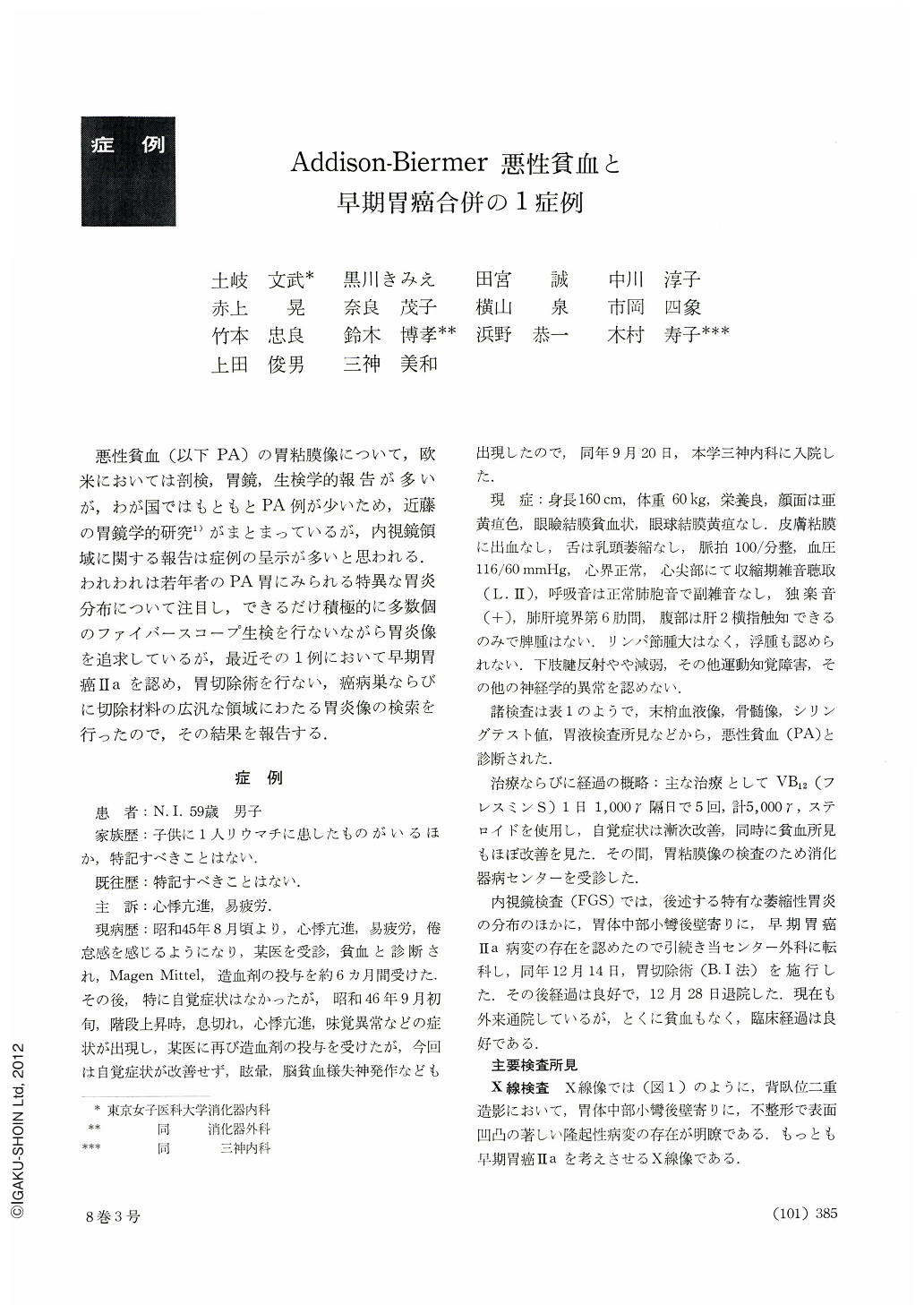Japanese
English
- 有料閲覧
- Abstract 文献概要
- 1ページ目 Look Inside
悪性貧血(以下PA)の胃粘膜像について,欧米においては剖検,胃鏡,生検学的報告が多いが,わが国ではもともとPA例が少いため,近藤の胃鏡学的研究1)がまとまっているが,内視鏡領域に関する報告は症例の呈示が多いと思われる.われわれは若年者のPA胃にみられる特異な胃炎分布について注目し,できるだけ積極的に多数個のファイバースコープ生検を行ないながら胃炎像を追求しているが,最近その1例において早期胃癌Ⅱaを認め,胃切除術を行ない,癌病巣ならびに切除材料の広汎な領域にわたる胃炎像の検索を行ったので,その結果を報告する.
A relatively rare disease in Japan, pernicious anemia was encountered in a 59-year-old man, complicated with early cancer of the stomach. In this paper are correlated endoscopic fiindings and those of the resected stomach.
Endoscopy revealed a Ⅱa type protruded cancer on the lesser curvature of the mid-body, subsequently confirmed by biopsy as tubular adenocarcinoma. The mucosal picture in the body showed a small grayish white protrusion of flat surface along with atrophy. On the other hand, no atrophy was recognized in the antrum. There was a definite border between the area oral from the level of the angle to both sides of the wall and the area down below it. In the resected specimen as well, theree was a line of demarcation between the two areas. The segment oral from the angle showed a definite bordered area, staining deeply when treated with Yoshii's AH method. The mucosa in this area was confirmed as that of intestinal metaplasia. Histologically also, the mucosa oral from the demarcation showed that fundic glands were absent, with marked mucosal atrophy replaced by intestinal metaplasia. The area distal from the demarcation was free from atrophic changes, showing only hyperplasia of the intestinal mucosa.
The cancer was of mucosal one, measuring 10×12 mm, surrounded by flat, slightly elevated mucosa that showed intestinal metaplasia. Tissue of intestinal metaplasia was also recognized within the cancer nests themselves. Cancer seemed to have originated from the mucosa that had undergone intestinal metaplasia. Findings usually seen in gastric cancer associated with pernicious anemia were also recognized in our case, e.g., its existence in the body where mucosal changes were most prominent, and its protruded type.
In our previous report on the mucosal pictures of the stomach in pernicious anemia, we have proposed the designation, “reversed atrophic pattern”, because atrophy was most prominent in the corpus, a finding quite contrary to that of chronic gastritis. We would like to point out the fact that the mucosal findings in our case also presented a characteristic “reversed atrophic pattern”.

Copyright © 1973, Igaku-Shoin Ltd. All rights reserved.


